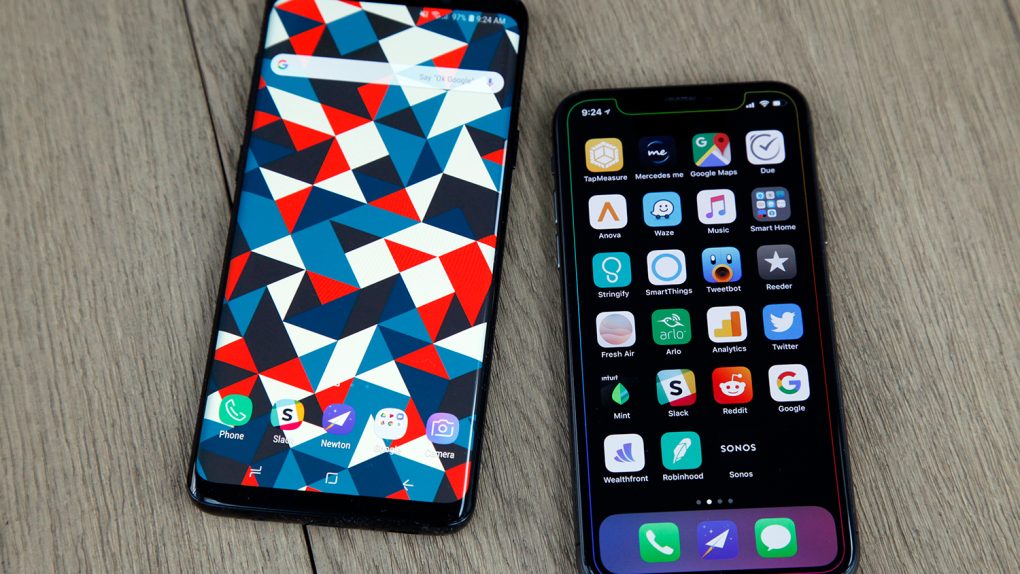Samsung’s flagship smartphone business is set to have its worst year in quite some time. Despite being two of the most impressive smartphones the world has ever seen, the Galaxy S9 and Galaxy S9+ have not been well received by consumers. Reports vary as far as how bad the situation truly is, but the fact that Samsung’s brand new flagship phones saw big price cuts within a month of being released is a very bad sign. It certainly appears as though Apple is the only company capable of releasing smartphones with the same design year after year while still maintaining an astronomical sales pace.
Of course, Samsung’s component business is thriving. The company supplies key parts such as DRAM and NAND chips to its own smartphone and computer divisions as well as outside clients like Apple. Samsung’s component business is so successful at the moment that as of the fourth quarter last year, Samsung became the top chip maker in the world.
Apple doesn’t have the luxury of falling back on a booming component business. It’s a hardware company that sells primarily high-end smartphones and other devices to consumers, and Samsung remains Apple’s biggest rival in this regard. In 2018, however, it’s not shaping up to be much of a rivalry at all.
Samsung will undoubtedly sell millions of Galaxy S9 and Galaxy S9+ handsets over the course of 2018. Let’s not forget that the company spends billions of dollars each year marketing and advertising its products. Insiders and industry watchers are expecting sales to be down significantly compared to sales of last year’s Galaxy S8 and S8+ though, and overall smartphone sales are expected to decline in 2018 as well.
The company’s second big flagship phone of the year is expected to be unveiled in early August, and it should be released later that month. This time around, the Galaxy Note 9 could have as much as a full month of sales to enjoy before Apple’s new iPhone models are released. Of course, given what we’ve seen so far with the Galaxy S9 and S9+, Samsung’s Galaxy Note 9 isn’t likely to make any waves even if it does launch long before Apple’s 2018 iPhone models debut. A leak just yesterday confirmed that the Note 9 will feature the same design as last year’s Galaxy Note 8, and we’ve all seen how well that strategy worked for the S9 and S9+.
Now let’s take a look at Apple’s plans for 2018.
First and foremost, the company is expected to release either three or four new iPhone models this year. There will be a new version of the iPhone X with upgraded specs and a 5.8-inch OLED display, and it’ll reportedly see a $100 price drop compared to last year’s model. Then a new “iPhone X Plus” phablet with a 6.5-inch OLED screen will launch at the current-generation iPhone X’s price points.
The star of the show in terms of sales volume is a new lower-cost iPhone that will look like the other two models, but it’ll feature a 6.1-inch LCD display and cheaper components. Apple could sell it for as little as $599 or $699 according to estimates, which would undoubtedly make it a smash hit. And finally, a new version of the iPhone SE may debut this year with upgraded specs and a design that’s in line with the iPhone X.
Apple has never offered this much variety with new iPhone models. With Samsung’s smartphone business struggling in 2018 and a lack of competition from other companies in tier 1 markets, iPhone sales are expected to soar.
Moving beyond smartphones, Apple is also expected to release a brand new version of the Apple Watch in 2018. The Apple Watch Series 4 is expected to feature the company’s first ever major redesign, with a larger OLED display in a case that’s roughly the same size as Apple’s current Watch models. Samsung might release a new watch or two in 2018, but they’ll barely be blips on the radar — as of the fourth quarter last year, Apple owned an estimated 61% of the smartwatch market while Samsung’s smartwatch market share came in at about 8%.
Apple is also expected to release new iPad models with a refreshed design that ditches the home button and replaces Touch ID with Face ID. This should usher in true multi-user support, which could be a big boost for sales. A family may be more inclined to shell out $650 or more for a tablet when several different members of the household can all use the same device. Samsung will also launch new tablets this year, but again, Apple dominates the market. Q1 2018 estimates have Apple’s share of the tablet market at 29% while Samsung hovers at 17%, and that gap could widen as the year progresses.
Long story short, it’s a good thing Samsung has a booming components business to prop it up, because things aren’t looking good in 2018 for its high-end, high-margin smartphones, tablets, and wearables. Of course, 2019 should be a different story entirely.








